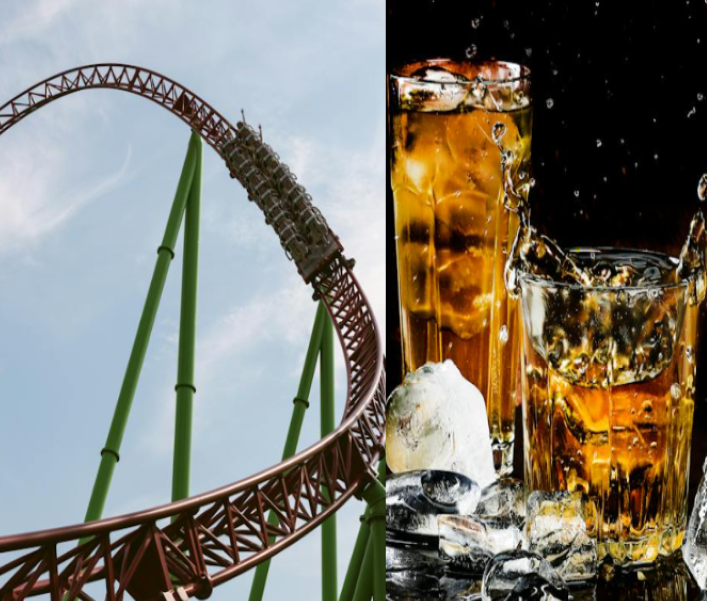Temples, Terraces, and Towers: Machu Picchu and the Sublime Legacy of Great Empires
Disappear deep into the Andes and rise to its summit, and you’ll capture a panoramic world. Descend from its snow-capped peaks and lose yourself amidst Peru’s vast and verdant selvage, and you’ll make another fine rediscovery. Peru- the land of immense ecological diversity- was also home to the Incans and arguably their greatest crown jewel- Machu Picchu!
Machu Picchu translates to “Old Peak” in Quechua. You likely know the place from its famous postcard photo (the two peaks rising into the background). It’s a magical and mysterious site. How or when did it come to be?

Historians have speculated that German adventurer Augusto Berns first discovered Machu Picchu in 1867, but it wasn’t until Yale Professor Hiram Bingham stumbled upon it in 1911 (alongside his Quechua-speaking guide, Melchor Arteaga) that its fame extended across the globe1. In 1983, Machu Picchu became a UNESCO World Heritage Site1.
Machu Picchu is located about 50 miles (80 km) northwest of Cusco in the Cordillera de Vilcabamba and is perched above the Urubamba River valley1. The Incans likely built and occupied it from the mid-15th or 16th century1. Historians and archaeologists speculate that Incan ruler Pachacuti Inca Yupanqui (reigned c. 1438-1471) used it as his palace complex (based upon its construction style and other evidence)1. An excavation of several dozen skeletons led others to believe the site was a sanctuary for the Virgins of the Sun (Chosen Women), an elite Inca group, and a third group concluded that it may have been a royal retreat1.
Machu Picchu is roughly divided into two sections- an urban and agricultural sector, as well as an upper and lower town (temples can be found in the former, and warehouses can be found in the latter)2. There are at least 200 buildings arranged along the wide parallel terrace that surrounds Machu Picchu’s east-west central square3. Many layered terraces are located to the right of Machu Picchu’s City Gate. The Incans scattered topsoil, dirt, and stone chips across them to prevent mudslides and flooding4.

The residential region was in the eastern section of the city and the religious and ceremonial center was in the western section (the main square divided them)11. The Incans used the Torreón in the western section as an observatory11. Lower-class people, storage spaces, and simple houses comprised the eastern (residential section). The royalty area (a sector for nobility) was the residence of the amautas (“wise people”) and consisted of a group of houses with reddish walls. The zone for ñustas (“princesses”) contained buildings with trapezoidal rooms, and rites and sacrifices were held in the Monumental Mausoleum (a carved statue with a vaulted interior and drawings inside).
The Incans likely built various “kanchas” (compounds) to exploit the terrain, and then developed a sophisticated channeling system to irrigate its fields3. The ashlar technique that the Incans used involved cutting up polished dry-stone. Given the Urubamba Valley’s sloped terrain and its proclivity for faulting and fracturing, workers developed several methods to stabilize all their infrastructure. They avoided using mortar, inserted “L-block” stones, tapered the doors and windows, and rounded various building corners. They also offset their building-walls from row to row instead of assembling them (bottom up) in a straight line4.
Enter Machu Picchu, and what are its highlights? Its first main feature is its semicircular “Temple of the Sun.” The Incans built the temple on the same rock that overlies Bingham’s “Royal Mausoleum,” and it resembles the Temples of the Sun in the cities of Cusco & Pisac5,6. Its workers constructed the temple from ashlar stone, placed it atop a 1.2 x 2.7-meter platform, and outfitted it with unique features5,6. The “Serpent’s Door” opens onto a series of 16 pools and affords a view of Huayana Picchu (literally, “Young Peak” in Quechua)5,6. The Incans named the temple’s two trapezoidal windows the “Solstice” and “Qullqa” windows, and they used them for astronomical purposes5,6. Numerous constellations, including Llamacnawin, Llama, Unallamacha, Machacuay, and the Pachapacriq Chaska star, are viewable through the windows5,6.
After that there are the Industrial and Intihuatana Stones that flank Machu Picchu’s Main Square. The Incans designed the Intihuatana Stone as an astronomical calendar or clock; one of many South American ritual stones arranged so that it points directly at the sun during the Winter Solstice7. Its name (which Bingham perhaps coined) roughly translates to “tied/hitched up to the sun.”8 The Incans believed that the stone- which is situated at 13°9’48”- held the sun in place along its annual path. The Sun appears exactly above the pillar (casting no shadow) at midday on November 11 and January 30. On June 21, it casts the longest shadow (on the southern side), and on December 21, it casts a much shorter shadow.
During the Incan month of Qhapaq Raymi, worshippers observed the Royal Feast of the Sun, and they did so from the third highlight- a special cave known as the Inti Mach’ay. The festival- which began early in the month and concluded on the December Solstice- was an initiation festival. Noble boys entering manhood pierced their ears as part of one of the festival’s various ceremonies9. Inti Mach’ay’s entrances, walls, steps, and windows were allegedly some of the finest works of masonry in the Incan empire9. The cave also includes tunnel-like windows that allowed sunlight for only a few days during the December Solstice9.
Machu Picchu also includes a Cemetery, Funerary Rock, House of Guards, Royal Tomb, Ritual Fountain, Royal Palace, Noble Houses, Factory Houses, and a Main Temple. Many tourists and travelers hike up Huayna Picchu. The peak is deceptively steep, and climbers must scramble up on their hands and feet. The total ascent is just over 360 meters (1,000 feet) with a very steep angle at the top10. It provides a bird’s-eye view of Machu Picchu and allows viewers to appreciate the scale and grandeur of the ancient city.
The Incans shouldered an enormous empire that stretched from the northern border of modern Ecuador to the Maule River in Central Chile (extending along the Pacific coast and Andean highlands)11. They were a very stratified society and ruled with the aid of aristocratic bureaucracy11. Their architecture, agriculture, and technology- irrigation systems, palaces, temples, and fortifications- were very sophisticated11. They grew corn (maize), white and sweet potatoes, squash, tomatoes, peanuts, chili peppers, and cassava; herded guinea pigs, ducks, llamas, alpacas, and dogs; and made clothes from llama wool and cotton11.
If there was any achievement that stood out most amongst the Incan people, it was their highly complex road system…one that covered at least 2,250 miles. Various pathways interlinked with it, and the Incans supplemented their roadways with rock tunnels and vine-supported suspension bridges11. Swift-footed servants transported messages in the form of knotted ropes (“quipus”) as far as at least 150 miles (240 km) per day11. The Roman empire and the Eisenhower administration were in some sense equals in the realm of highway development!
Today, we still have the great cities of Cusco, Lima, Quito, Santiago, and more, but the Incan Empire is no more. It’s just a historical memory. The Spanish conquistadors certainly hastened their decline, but would they have disappeared even without the Spanish arrival? Hard to say. It seems all empires that have ever risen have fallen…. the Romans, Greeks, Persians, British, Spanish, Ottoman, and so on. What does “fallen” really mean though? The relics and residuals of every empire that has ever been still linger to this day- their religions, their languages, their clothing, their music, and their foods- but the massive omnipresence and potency (hegemony) the various empires had has significantly diminished.
Their ruins…ruins like the Roman Forum or the Greek Acropolis…speak loudly for them. Is that a good thing? Does every modern Roman, Greek, Englishman, Seleucid, Mayan, or Incan pine for the “good old days” (when their domains ruled far and wide)? Many I imagine do. But sometimes resting quietly on one’s arduous laurels brings the greatest degree of calm and satisfaction. Imagine you build an enormous company- Facebook, Google, Disney, McDonalds, or Coca Cola. Now imagine yourself as their CEO and imagine all the stress and pressure that accompany the rewards of running such an “empire.” You recognize that they may not last forever. Sometime- between now and whenever the sun dies- their sovereignty will fade. And, yet, like children or written poetry, their legacy will live on!
One can only imagine the type of transcendental satisfaction those who built Machu Picchu felt when the city was finally complete (assuming they saw its completion)! Could they predict how renowned their ancient city would become? Its legacy to the modern world? If you wish to participate in that legacy, grab yourself an alpaca hat and sweater, put on some “El Condor Pasa,” and make your way 50 miles northwest of Cusco.
SOURCES
[1]Machu Picchu | History, Facts, Maps, Elevation, Country, & Photos | Britannica
[2] Bordewich, Fergus (March 2003). “Winter Palace”. Smithsonian: 110. Retrieved 25 February 2013
[3] Longhena, Maria (2007). The Incas and Other Ancient Andean Civilizations. Barnes & Noble Books
[4] Wright, Kenneth R.; Valencia Zegarra, Alfredo (2000). Machu Picchu: A Civil Engineering Marvel. Reston, Virginia: ASCE Press (American Society of Civil Engineers).
[5] Dearborn, D.S.P.; White, R.E. (1983). “The “Torreon” of Machu Picchu as an Observatory”. Archaeoastronomy.
[6] Krupp, Edwin (1994). Echoes of the Ancient Skies. Mineola: Dover Publications, Inc. pp. 47–51.
[7] Amao, Albert (2012). The Dawning of the Golden Age of Aquarius: Redefining the Concepts of God, Man, and the Universe. AuthorHouse. p. 78.
[8] “Ancient Observatories – Timeless Knowledge” (PDF). Stanford University Solar Center.
[9] Dearborn, David S. P.; Schreiber, Katharina J.; White, Raymond E. (1 January 1987). “Intimachay: A December Solstice Observatory at Machu Picchu, Peru”. American Antiquity. 52 (2): 346–352.
[10] Climbing Huayna Picchu – Get The Best View Of Machu Picchu (machupicchutrek.net)
[11] Inca | History, Achievements, Culture, & Geography | Britannica
Discover more from DG Speaks
Subscribe to get the latest posts sent to your email.





